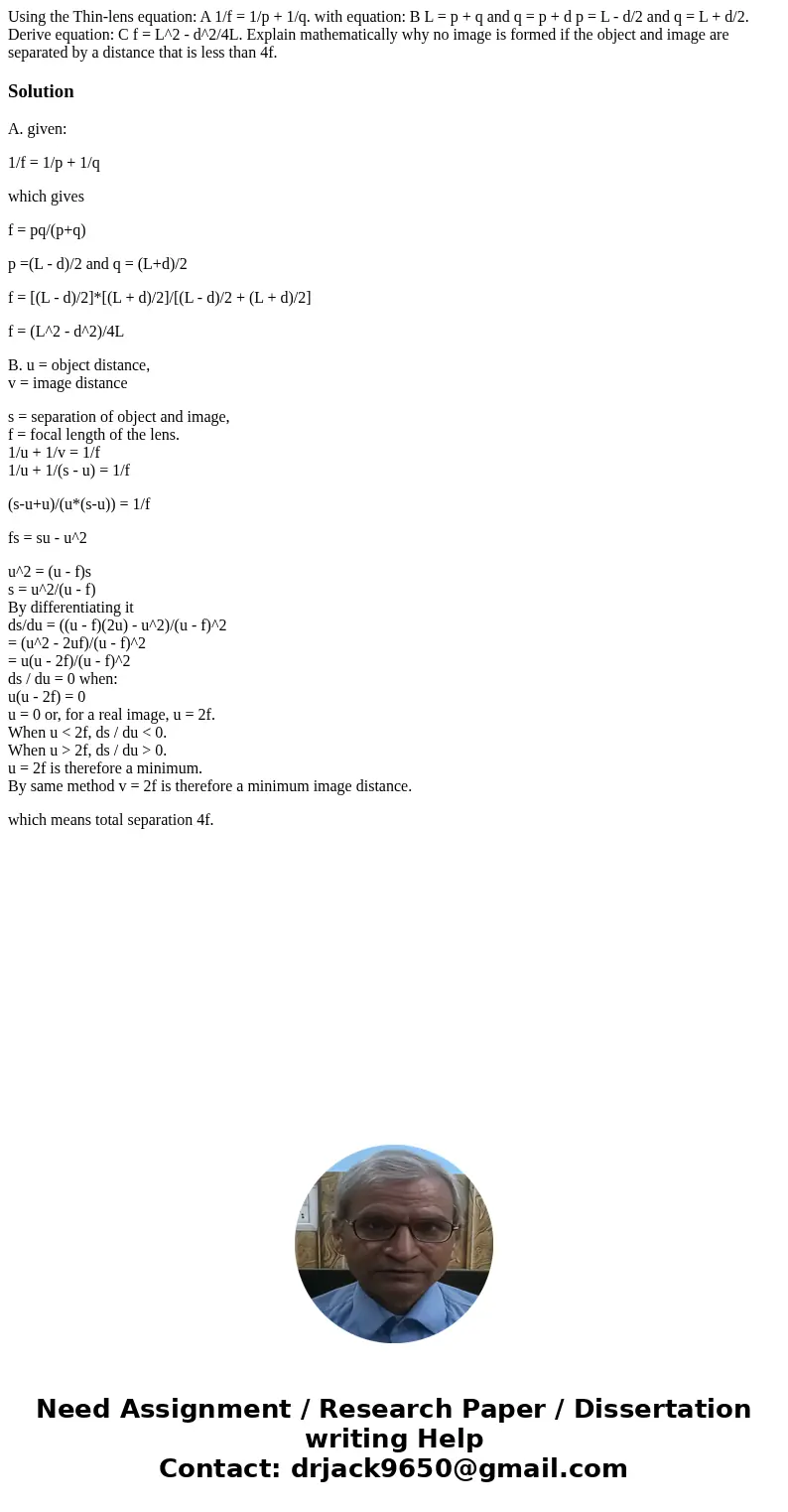Using the Thinlens equation A 1f 1p 1q with equation B L
Using the Thin-lens equation: A 1/f = 1/p + 1/q. with equation: B L = p + q and q = p + d p = L - d/2 and q = L + d/2. Derive equation: C f = L^2 - d^2/4L. Explain mathematically why no image is formed if the object and image are separated by a distance that is less than 4f. 
Solution
A. given:
1/f = 1/p + 1/q
which gives
f = pq/(p+q)
p =(L - d)/2 and q = (L+d)/2
f = [(L - d)/2]*[(L + d)/2]/[(L - d)/2 + (L + d)/2]
f = (L^2 - d^2)/4L
B. u = object distance,
v = image distance
s = separation of object and image,
f = focal length of the lens.
1/u + 1/v = 1/f
1/u + 1/(s - u) = 1/f
(s-u+u)/(u*(s-u)) = 1/f
fs = su - u^2
u^2 = (u - f)s
s = u^2/(u - f)
By differentiating it
ds/du = ((u - f)(2u) - u^2)/(u - f)^2
= (u^2 - 2uf)/(u - f)^2
= u(u - 2f)/(u - f)^2
ds / du = 0 when:
u(u - 2f) = 0
u = 0 or, for a real image, u = 2f.
When u < 2f, ds / du < 0.
When u > 2f, ds / du > 0.
u = 2f is therefore a minimum.
By same method v = 2f is therefore a minimum image distance.
which means total separation 4f.

 Homework Sourse
Homework Sourse